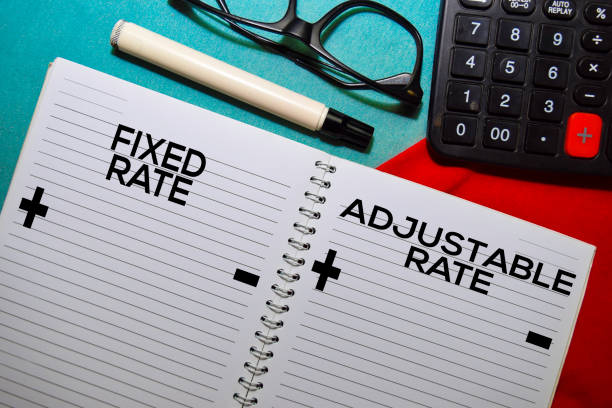Two of the most common types of mortgages are fixed-rate and adjustable-rate mortgages with different rate structures. This guide will help you navigate the benefits and drawbacks of each, so you can make an informed decision.
What is a Fixed-Rate Mortgage?
A fixed-rate mortgage is a home loan with a consistent interest rate for the entire term. This stability means your monthly payments will remain the same throughout the life of the loan.
Benefits of Fixed-Rate Mortgages
- Predictability: The most significant advantage of a fixed-rate mortgage is predictability. Your monthly payments remain constant, making it easier to budget.
- Long-term Planning: Fixed-rate mortgages are ideal for long-term planning. If you plan to stay in your home for many years, this mortgage offers stability.
- Protection from Market Fluctuations: Since the interest rate is locked, you are protected from market fluctuations that could increase your payments.
Drawbacks of Fixed-Rate Mortgages
- Higher Initial Rates: Fixed-rate mortgages often start with higher interest rates compared to adjustable-rate mortgages.
- Less Flexibility: If interest rates drop significantly, you won’t benefit unless you refinance, which can be costly.
What is an Adjustable-Rate Mortgage (ARM)?
An adjustable-rate mortgage (ARM) has an interest rate that changes periodically based on market conditions. Typically, an ARM offers a lower initial rate than a fixed-rate mortgage, but this rate can increase or decrease over time.
Benefits of Adjustable-Rate Mortgages
- Lower Initial Rates: ARMs usually start with lower interest rates, which can make monthly payments more affordable at first.
- Potential Savings: If market rates decrease, your payments may go down as well, leading to potential savings.
Drawbacks of Adjustable-Rate Mortgages
- Uncertainty: The biggest disadvantage of an ARM is uncertainty. Payments can fluctuate, making it harder to budget.
- Rate Increases: There’s a risk that your interest rate will increase significantly after the initial fixed period, leading to higher payments.
Fixed-Rate vs Adjustable-Rate Mortgages: Pros and Cons
When deciding between a fixed-rate and an adjustable-rate mortgage, it’s essential to weigh the pros and cons.
Fixed-Rate Mortgage
|
Pros |
Cons |
| Predictable payments | Higher initial rates |
| Long-term stability | No benefit from rate decreases without refinancing |
| Protection from interest rate increases |
Adjustable-Rate Mortgage Pros and Cons
|
Pros |
Cons |
| Lower initial interest rates | Payment uncertainty |
| Potential for lower payments if rates decrease | Risk of significant rate increases |
Which Mortgage is Better: Fixed or Adjustable-Rate?
The best mortgage type depends on your financial situation and long-term plans. A fixed-rate mortgage might be the best choice if you value stability and plan to stay in your home for many years. Conversely, an adjustable-rate mortgage could be beneficial if you expect to move within a few years or believe interest rates will stay low.
Differences Between Fixed-Rate and Adjustable-Rate Mortgages
Interest Rates: Fixed-rate mortgages have constant rates, while ARMs have rates that adjust periodically.
Payment Stability: Fixed-rate mortgages offer stable payments, whereas ARM payments can fluctuate.
Initial Costs: ARMs usually have lower initial rates compared to fixed-rate mortgages.
Tips for Choosing the Right Mortgage
Assess Your Long-Term Plans: Consider how long you plan to stay in the home.
Evaluate Your Risk Tolerance: Determine your comfort level with potential payment fluctuations.
Consult a Real Estate Agent: Working with a top real estate agent in Atlanta, like James, can provide valuable insights and guidance.
For more personalized advice and a free house value estimate, click this link!



Leave A Comment